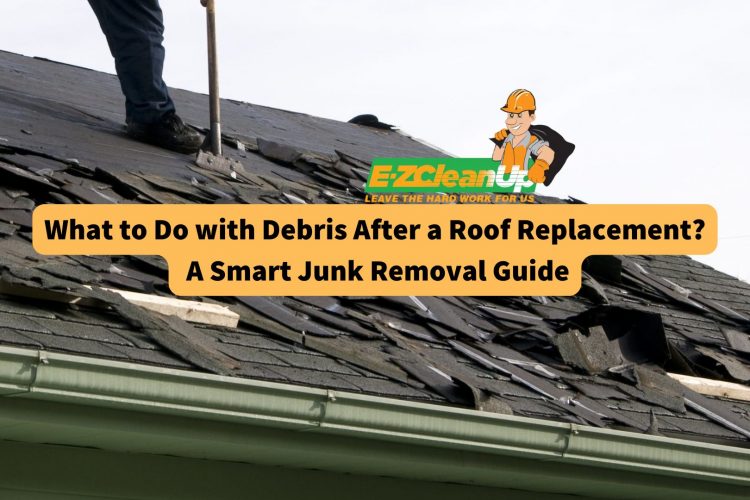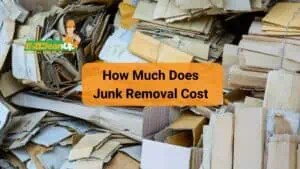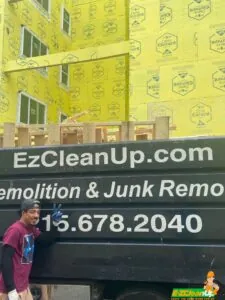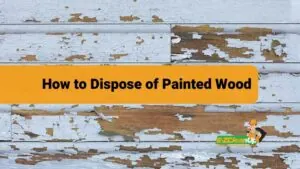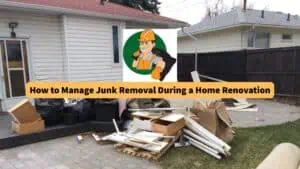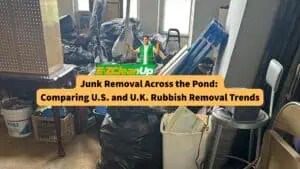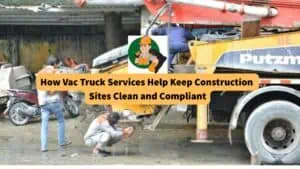A roof replacement leaves behind a lot of debris–including shingles, wood, and nails. You’ll need a smart plan to clear it. Options can include renting a dumpster, hiring a junk removal service, recycling materials, or hauling the waste yourself.
This smart junk removal guide covers the best ways to handle debris after a roof replacement.
#1 What You Should Know Before Replacing Your Roof?
Before starting your next project, here are the important things to know before replacing your roof so you’ll have a smooth process. Here are key steps to take:
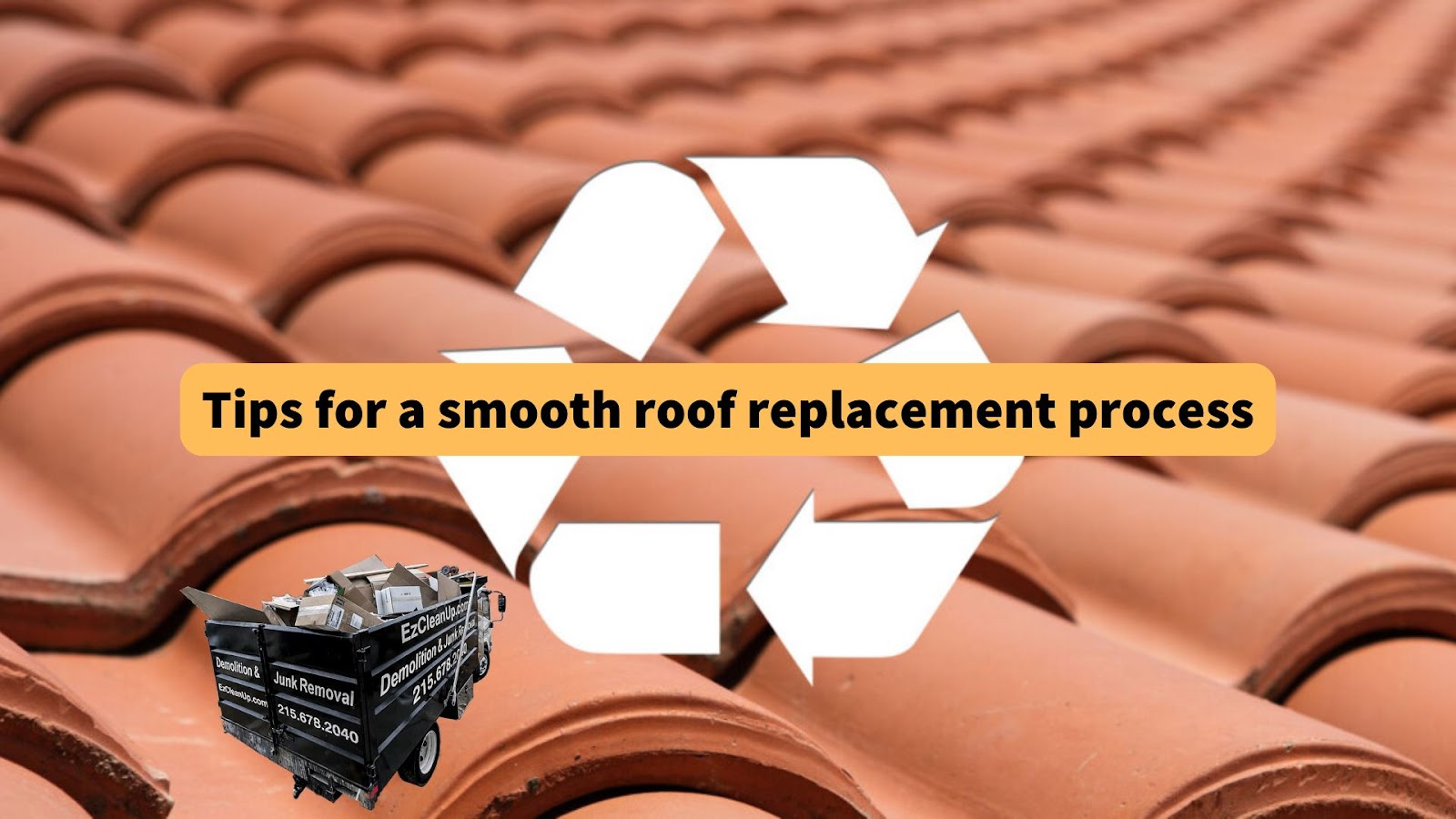
Assess the Project
Decide if you need a full roof replacement or just repairs. Likewise, opting for expert roofing contractors can help determine the exact scope of work needed and the costs involved, ensuring professional results.
Choose a Trusted Contractor
You can try researching roofing companies online, check their reviews, and ask for references, so you’ll end up hiring a reliable professional.
Prepare Your Home
To prepare your home for a roof change, you can move vehicles, patio furniture, and other items away from the work area first. Next, cover your indoor furniture with plastic sheets to protect them against dust and debris.
Inform Your Neighbors
Before you start, it’s best to let your neighbors know about the project, so they can prepare for noise and possible disruptions.
Take Safety Precautions
Don’t forget to trim overhanging branches that could fall during the work. Also, always try to keep children and pets away from the construction area.
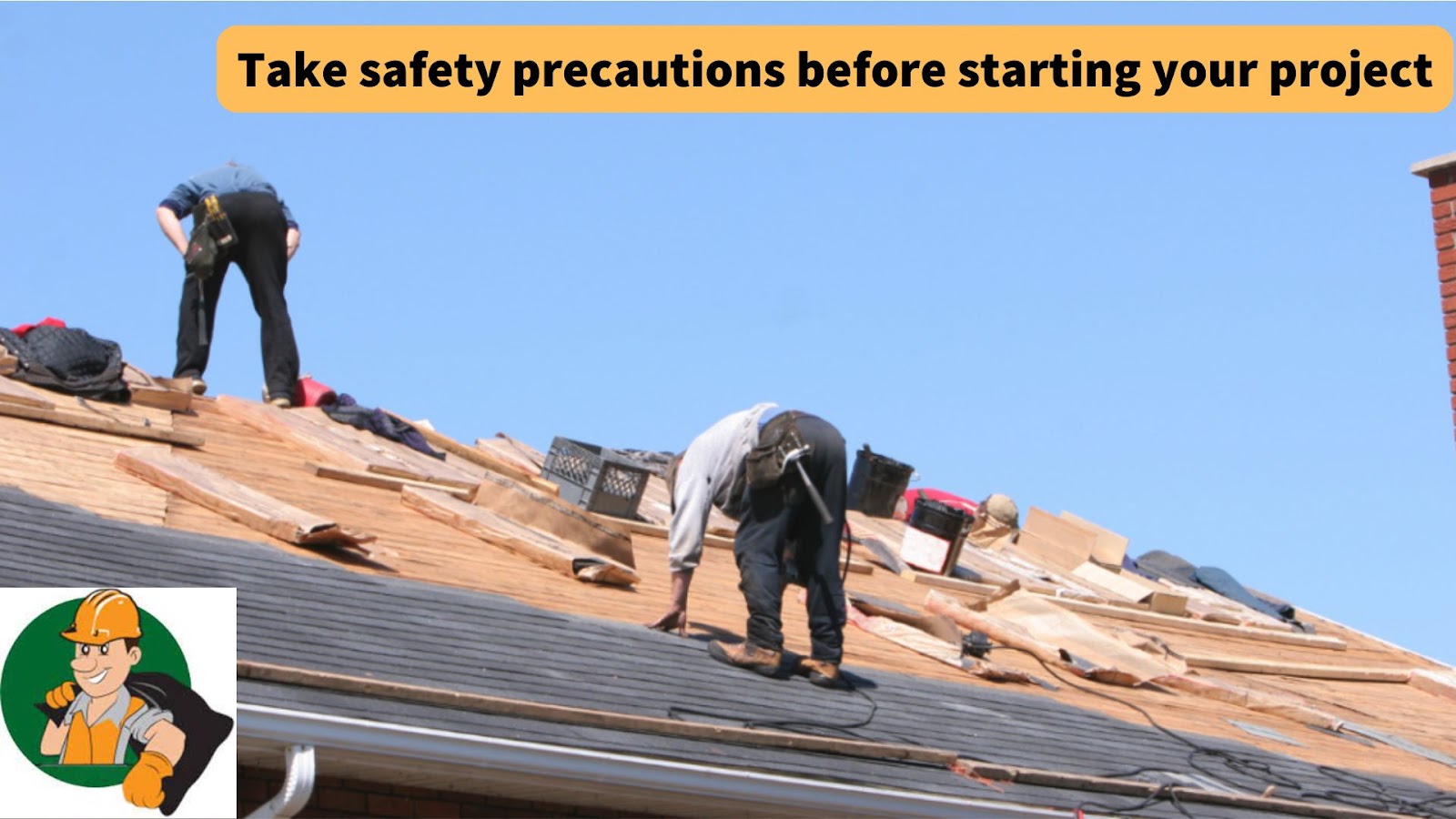
Inspect Your Roof and Attic
Inspect your home by looking for signs of damage or wear and discuss them with your contractor. You can also check your attic for water damage or mold that may need fixing before the replacement.
Plan for Logistics
Always try to coordinate material delivery and work schedules with your contractor, and make sure that access points to the roof are clear for the workers.
Final Steps
To give you peace of mind, you can schedule a professional inspection to check for hidden issues. You can also discuss warranty details and maintenance tips to extend your roof’s lifespan.
#2 Your Guide to Debris Management After a Roof Replacement
For better debris management after a roof replacement, here’s your guide covering strategies and options.
1. Sort the Debris to Reuse or Recycle
Some materials can be reused or recycled instead of thrown away. You can check if any shingles, flashing, or wood are still in good shape. Also, sort recyclable materials like metal, wood, and asphalt shingles into separate piles for proper disposal.
2. Rent a Dumpster for Easy Cleanout
A dumpster can help make your cleanout easier by keeping all the waste in one place. You can also choose a size based on how much debris you have. Schedule drop-off and pickup with the rental company to avoid clutter and guarantee you a timely disposal.
3. Hire a Junk Removal Service for Fast Disposal
If you want to avoid handling debris yourself, a junk removal service is a quick solution. Try looking for companies that also specialize in construction waste. You can get price quotes from different providers to find the best deal.
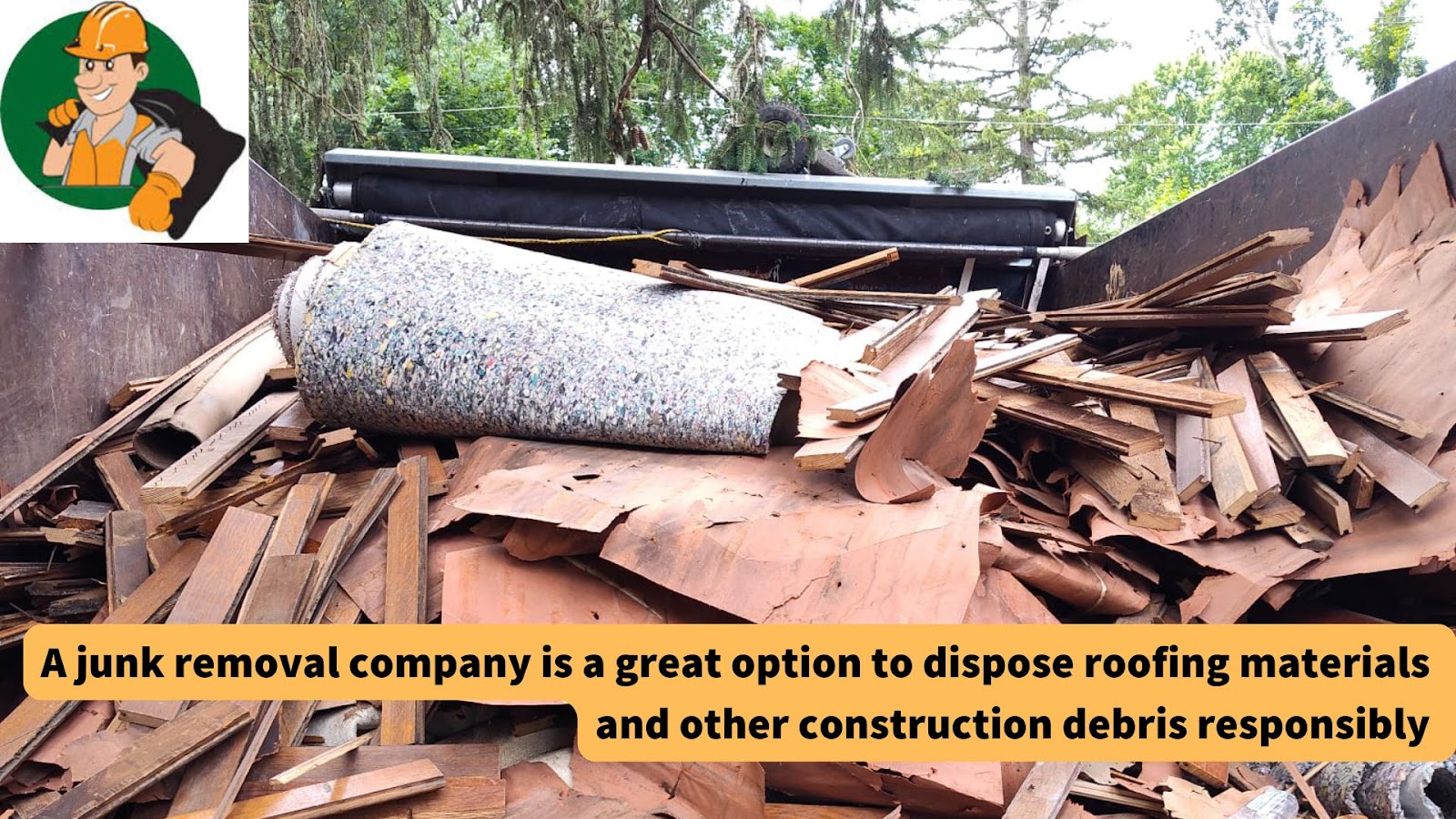
4. Recycle Asphalt Shingles and Other Materials
Many areas have recycling centers that accept asphalt shingles for reuse in new products. Before dropping them off, check local rules on roofing material disposal to make sure that you’re complying with the regulations.
5. Donate Usable Materials to Reduce Waste
Some roofing materials–like shingles, tiles, or metal sheets–may still be in good condition. If they’re still reusable, you can donate them to charities, community projects, or individuals in need. Just make sure that the materials are still usable before donating.
6. Dispose of Hazardous Waste Safely
Some roofing waste–like old insulation or lead-based materials–can be harmful. Try to identify the hazardous materials in your debris first and follow your local disposal guidelines. Never mix hazardous waste with regular trash.
7. Take Debris to a Local Waste Facility
If you prefer to handle disposal yourself, you can check where your nearest waste facility is. Plan your trip and make sure that you have the right tools–like heavy-duty bags or a trailer–to transport the debris safely.
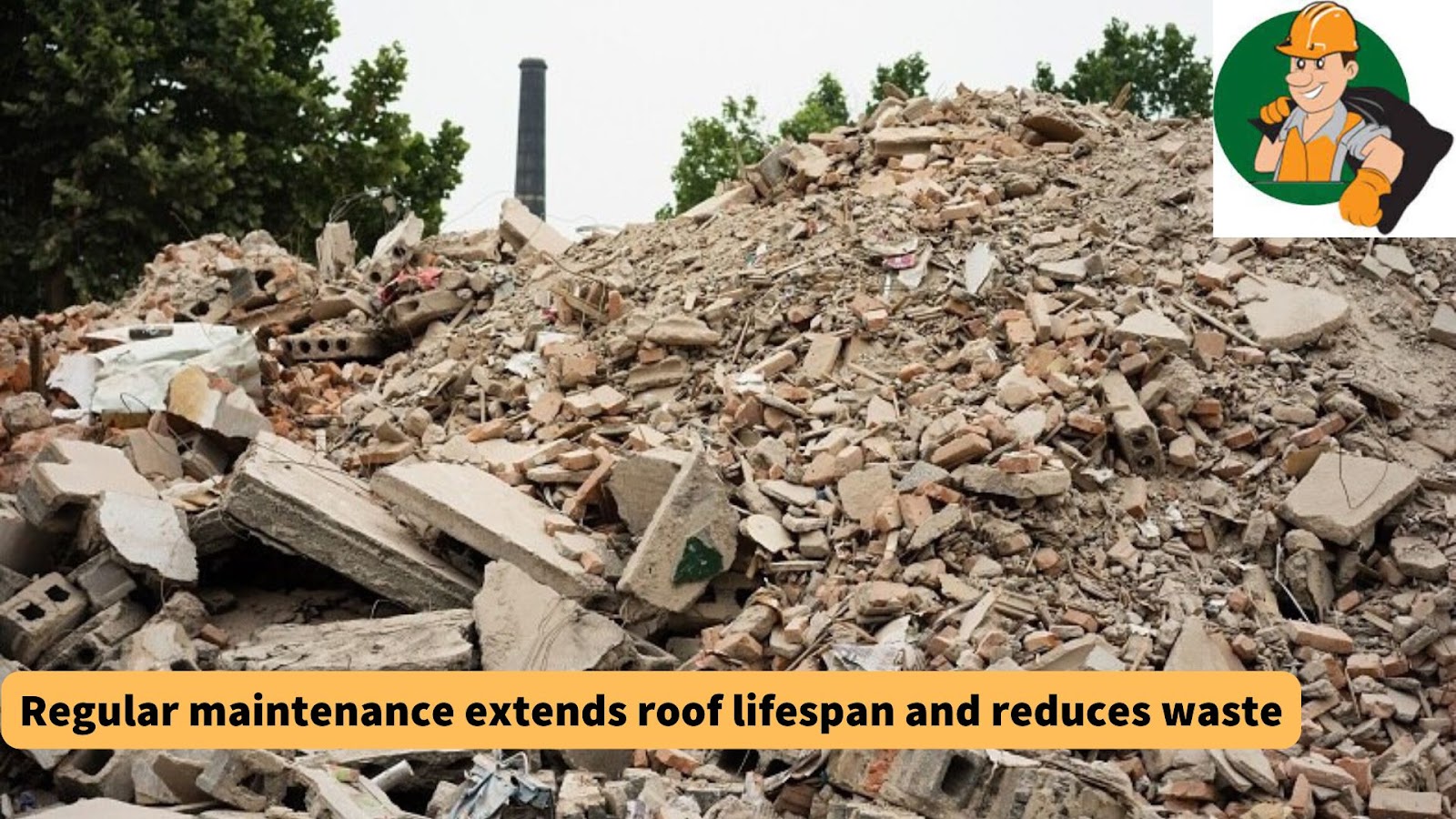
8. Reduce Roofing Waste in the Future
Always keep your roof in good condition by maintaining it regularly to avoid frequent replacements. Regular inspections, small repairs, and protective features–like a gutter guard–can extend your roof’s lifespan and reduce waste.
#3 FAQs
How long does it take to clean up roofing debris after a replacement?
The cleanup time can depend on the size of the roof and the disposal method. If you opt for using a junk removal service, it can be done in a few hours. In comparison, a DIY cleanup may take a few days.
Can I leave roofing debris on the curb for regular trash pickup?
Most areas don’t allow construction debris in regular trash for pickup. You can always check with your local waste management service if they have special pickup options for this matter.
Are there any penalties for improper roofing debris disposal?
Yes, dumping roofing materials in non-approved areas is illegal and can result in fines. Your local regulations might also require permits for disposal in certain areas.
Can I burn old roofing materials?
Burning roofing materials–especially asphalt shingles–releases harmful chemicals into the air, which is bad when inhaled and can hurt the environment. Therefore, burning old roofing materials is considered illegal in most areas.
#4 The Bottom Line – Go for Smart Ways to Handle Roof Replacement Debris
Handling debris after a roof replacement doesn’t have to be stressful. By separating materials for recycling, renting a dumpster, or hiring a junk removal service, you can keep your cleanup simple and fast.
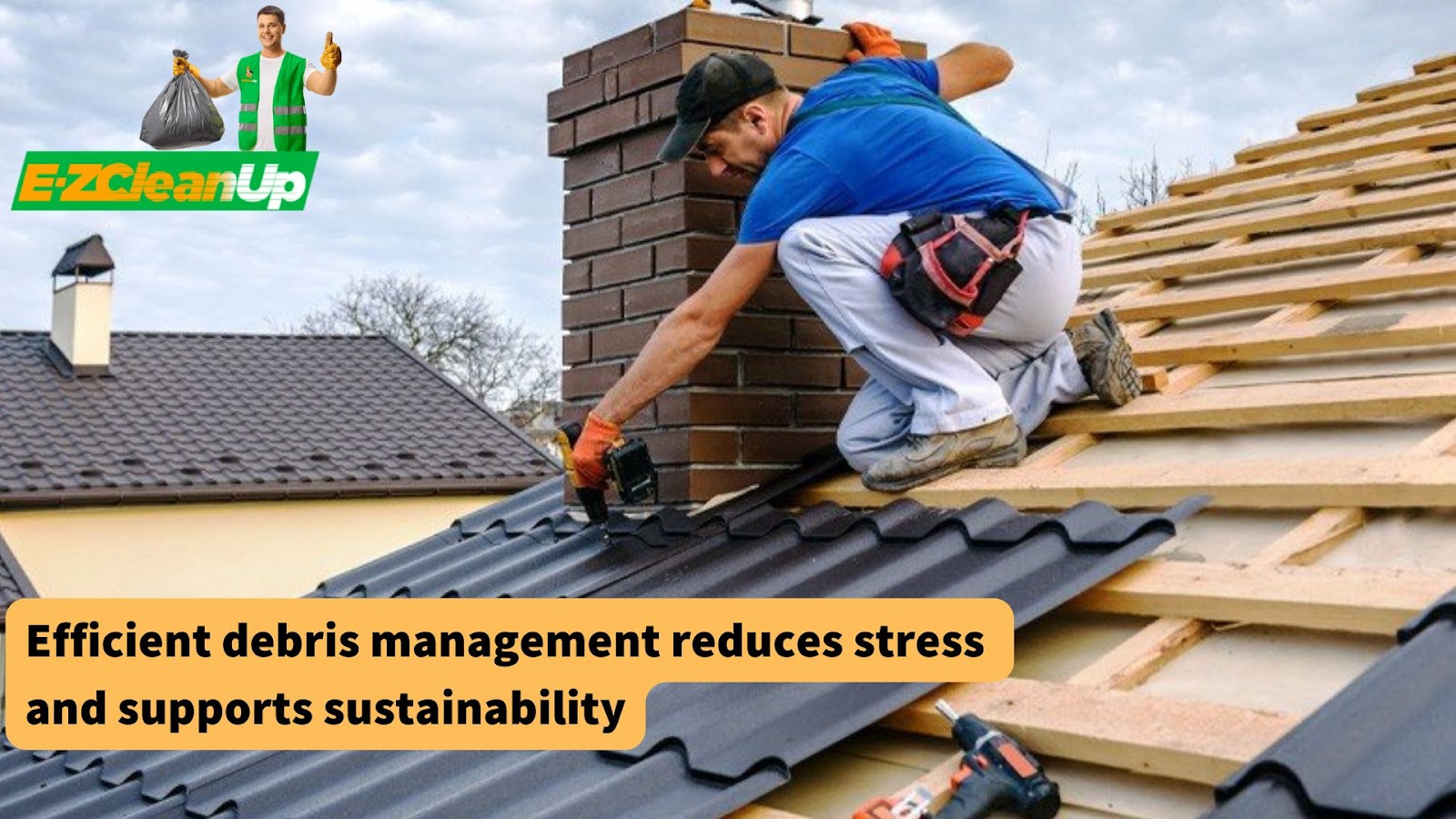
By recycling shingles, donating usable items, and safely disposing of hazardous waste can also help cut down on waste. Whether you clean up yourself or get professional help, by planning ahead, it will make the process easier. Once you keep up with your roof maintenance, you can also help reduce future debris to help the environment.

